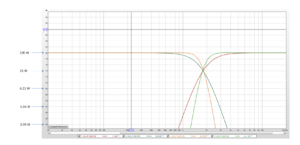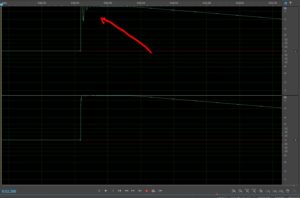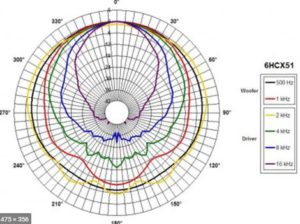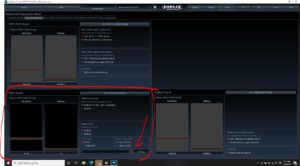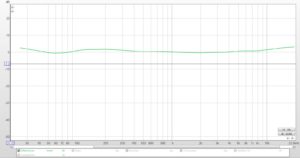I’ve posted this graphic a thousand times and other people have grabbed it and posted it 10,000 times. Maybe there should be some additional explanation because although most of us know that speakers “beam” at high frequencies, I don’t think that always translates into a real world understanding of something. That something is reflections. Here’s the graphic. On the left is speaker diameter. I’ve chosen some diameters that correspond to GB series speaker sizes. On the top is dispersion pattern. In the first column, the dispersion is nearly SPHERICAL. That means that the sound goes everywhere at (and below) the frequency in the box. As you move to the right (for any speaker size), you’ll see that the dispersion (the direction in which the sound leaves the speaker) narrows until it’s a narrow beam that travels outward from the speaker on its axis.
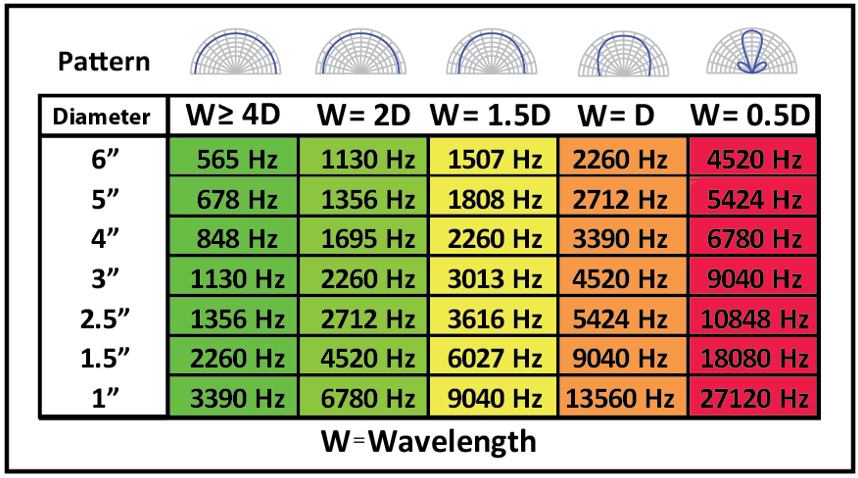
So, let’s consider a 6″ midbass in a 3-way. So long as we cross the speaker below about 500Hz, the sound goes in EVERY DIRECTION front, back and to the sides equally. Since the speaker is mounted in a baffle (the door), the rear-going sound is reflected from the baffle and that ADDS bass.Another way to look at this is that the speaker makes some amount of energy as sound. If the speaker is suspended (in a little box to contain the sound form the back of the speaker) the amount of sound that the speaker makes at low frequencies goes everywhere.If we cut “everywhere” in half with an infinite baffle, then we get 6dB more sound if we’re in front of the baffle because the energy now only goes to half of everywhere.If we add another baffle to make a corner, the we get 6dB more at frequencies that go everywhere.Every time we cut the radiating area in half, we get 6dB more at frequencies that go everywhere.
But what about frequencies that don’t go everywhere?Take the orange column, for example. The first baffle isn’t going to get us 6dB more gain because MOST of the sound is directed FORWARD of the driver.In the red column, the baffle doesn’t give us anything because none of the sound travels rearward.
So how does this affect tweeters and reflections at high frequencies? Can we “tame” reflections by aiming tweeters?At what frequencies can we tame or eliminate reflections from a 1″ tweeter?Generally speaking, we can affect the sound of reflections above about 10kHz by aiming the tweeter. That’s because below that frequency, the sound kind of goes EVERYWHERE. Aiming the tweeter does nothing at those frequencies.
What about a 2″ midrange hanging from a pod attached to the a-pillar?Below 2.7kHz, the sound goes EVERYWHERE. No matter how you aim it, the sound goes everywhere.That means that if you’re using a tweeter and crossing at 2kHz, aiming them on axis HAS NO EFFECT WHATSOEVER on the sound of reflections.
OK. Now, lets look at our pod again (sorry about the crappy drawing, but you’ll get the idea).

So here we have a speaker in a pod a foot in front of a reflecting surface. At frequencies at which the return path to the speaker (the distance from the speaker to the surface and back to the speaker) is equal to one wavelength, the sound of the reflection and the sound of the speaker are in phase. At those frequencies we get a peak in our response.At frequencies at which the return path is equal to a HALF a wavelength, we get a dip–a deep and narrow one. That’s because the sound of the speaker and the sound of the reflection are OUT of phase.So, if the speaker is 1 foot away, then the return path is 2 feet. 2 feet is a half a wavelength at about 280 Hz.What about 6″? What if it’s 6″ away? Then, the return path is 1 foot. 1 foot is a half a wavelength at about 550 Hz. That dip is going to be a problem.The closer to the reflecting surface, the HIGHER in frequency the dip will appear. The farther away, the LOWER in frequency the dip will appear.Now, if we go back to our chart, can we fix this problem by aiming the speaker?
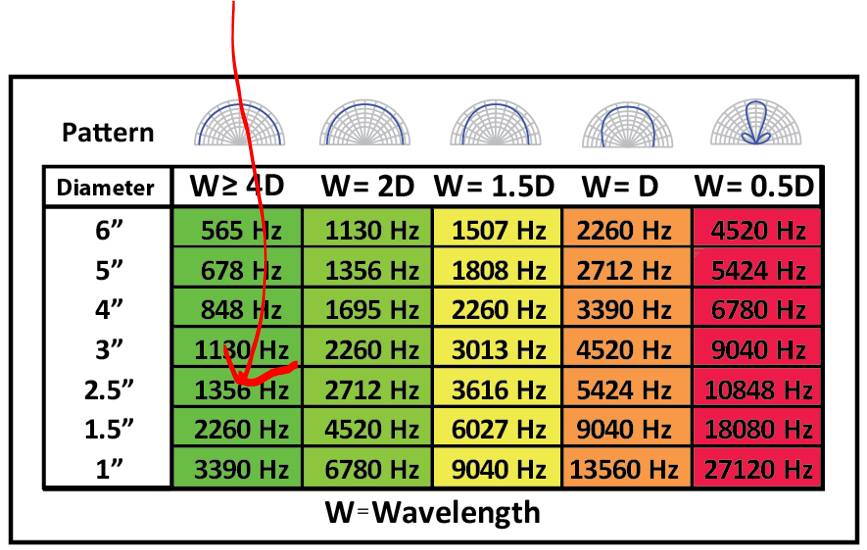
OK, what about a speaker that’s mounted in the dashboard? Is this terrible?Let’s look.
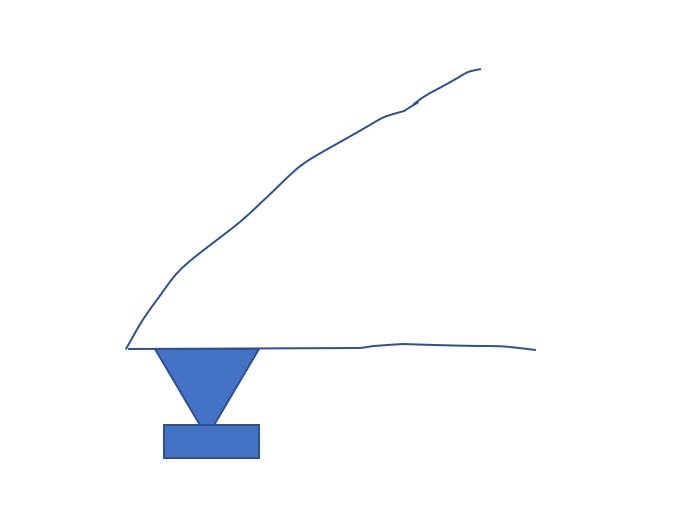
At low frequencies where sound goes everywhere, what happens?The radiating area is basically quartered. What does that mean? At low frequencies where the sound goes everywhere, we get a bunch of gain. we get 6dB for the dashboard and another 6 or a little more for the windshield (depending on the rake of the windshield).As frequency increases and the dispersion narrows, we get less. At really high frequencies at which the sound radiates ON AXIS in a narrow beam, we ONLY hear that sound reflected off the windshield.So, when you put speakers in the dash and you notice that you have a steep rolloff at high frequencies, don’t consider that a dip. Consider what happens below that as a peak. Cutting all of that gain at low frequencies is the way to equalize this.Why? Because cutting means less power. Less power means less excursion. Less excursion means less distortion.And, it means more low frequency output with a lot less power.
So, when you’re planning your system, you don’t need to build a thousand pods or do a thousand experiments. You can get a GENERAL idea of what’s likely to happen using a tape measure.All models are wrong and so will the tape measure be, but models are useful in pointing us in the right direction. With a little practice, you’ll be able to look at a speaker location and know, pretty closely, what you’re going to encounter when it’s time to tune cars.
But the real deal here is not to be hoodwinked by someone’s BS suggestion that you should aim the speaker differently to fix a reflection problem. That’s only useful at the highest frequencies a speaker will play. Below that, it makes no difference.So, in a 3-way system, which speaker should be aimed?Just the tweeter.
Oh, one more thing. In my chart, I’ve shown the dispersion for a speaker mounted in an infinite baffle. Here’s what it looks like if you put the speaker in a little pod. Sound goes everywhere at low frequencies–even behind the speaker.
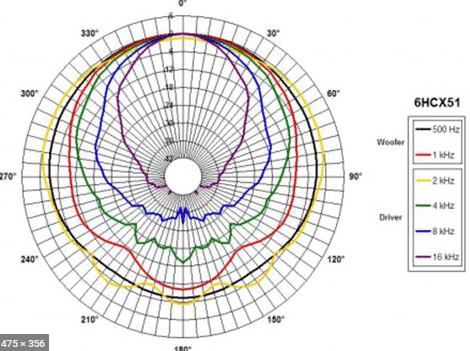
At low frequencies, dispersion is SPHERICAL.
One more thing to add here.Why does a GB60 work so well in a car as a midbass driver and doesn’t make as much midbass on the sound board in a retail shop?Because midbass drivers are ALWAYS mounted in close proximity to a CORNER in a car–in the door or in a kick panel. This adds a bunch of output at those frequencies. So, instead of a high Q driver with a peak in the response at low frequencies (the “european sound”), we rely on that corner to flatten the response with the GB60. That makes tuning the sound of the GB60 and the subwoofer easier because we don’t have a big peak contributed by the sloppy sounding high Q driver to tame with the EQ.And this is why the GB60 is a great driver for a car, but it isn’t designed for a little box for a home speaker. If you’re going to build a box for a home speaker, that peak caused by a higher Q driver is helpful. If you want to use a GB60, then you’ll need some bass boost.



